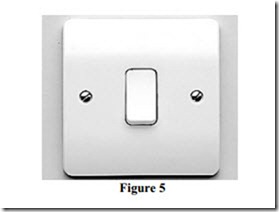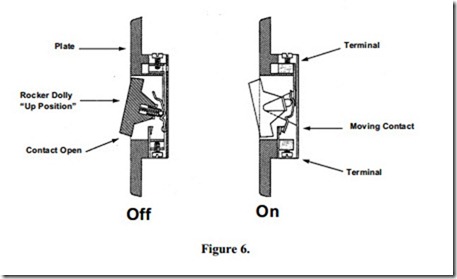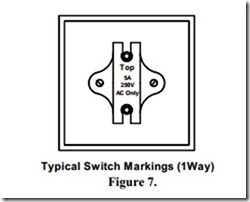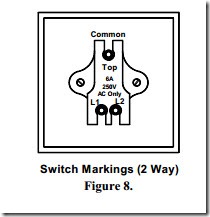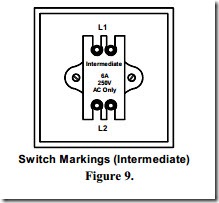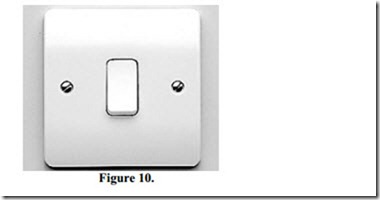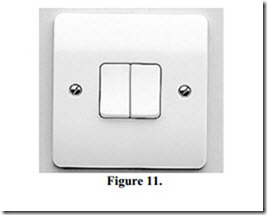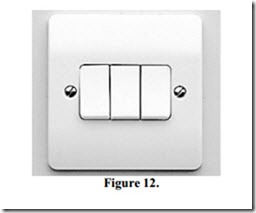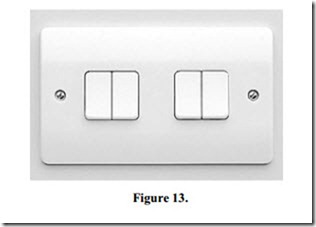Switches
The type of switch used in domestic installations is called a plate switch. Figure 5 illustrates a 1 gang 1 way plate switch. One gang refers to the fact that there is only one switch in the plate. One-way indicates that it is a one-way switch, two-way and intermediate switches are also available.
These switches are usually rated at 5 or 6 Amps, and intended for use on AC circuits only. They are rocker type switches and the operating principle of a 1 way single pole switch is shown in Figure 6.
Single pole means that there is only one contact. The contact must be used to break the phase conductor. If the number of poles is not mentioned for a particular switch, then it is assumed to be a single pole switch. Double pole switches are also available.
This type of switch has a centre-pivoted dolly. This dolly operates a contact, through a spring loaded, ball and socket mechanism. When the rocker is pressed to the ‘down’ position, the contact closes and when pressed to the ‘up’ position, the contact opens.
Switch Terminal Identification
Figure 7 illustrates a 1 Gang 1 Way Single Pole switch, it has only two terminals. The phase conductor or switch feed is connected to the top terminal and the output conductor or switch wire is connected to the bottom terminal. If the opposite is done then the switch will still control the circuit. The switch should be fitted the right way up as indicated by the information on the back of the switch.
Figure 8 illustrates a 1 Gang 2 Way Single Pole switch, it has three terminals. The switch feed is normally connected to the common terminal and the switch will then give an output on either the L1 or L2 terminal. If there is more than one switch mounted on the plate, the wiring will be more complicated. It is best to simply identify each switch as a separate item.
Figure 9 illustrates an intermediate switch, it has four terminals. This is a more complicated switch and will be dealt with later on.
Switch Gang and Way Identification
Figure 10 illustrates a 1 Gang Plate switch; it may be a 1 Way, 2 Way, intermediate or double pole type.
Example:
1 Gang 1 Way Plate Switch
1 Gang 2 Way Plate Switch
Figure 11 illustrates a 2 Gang 2 Way Plate Switch. Two gang one way switches may not always be available, in this event two gang two way plate switches are generally used. This also applies to 3, 4 and 6 Gang switches.
Figure 13 illustrates a 4 Gang 2 Way Plate Switch; a double box is required for this switch. A 6 Gang 2 Way Plate Switch is also available
